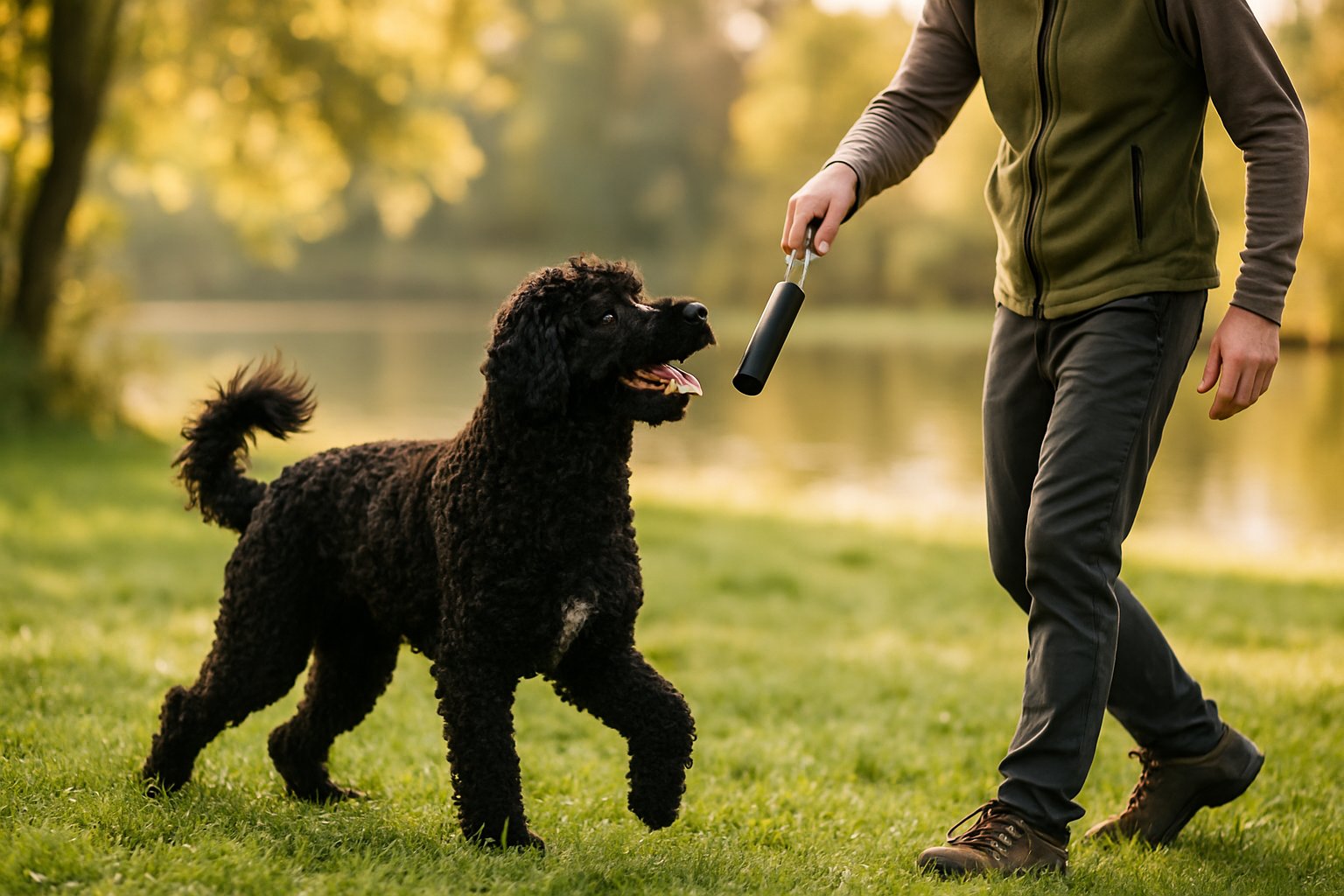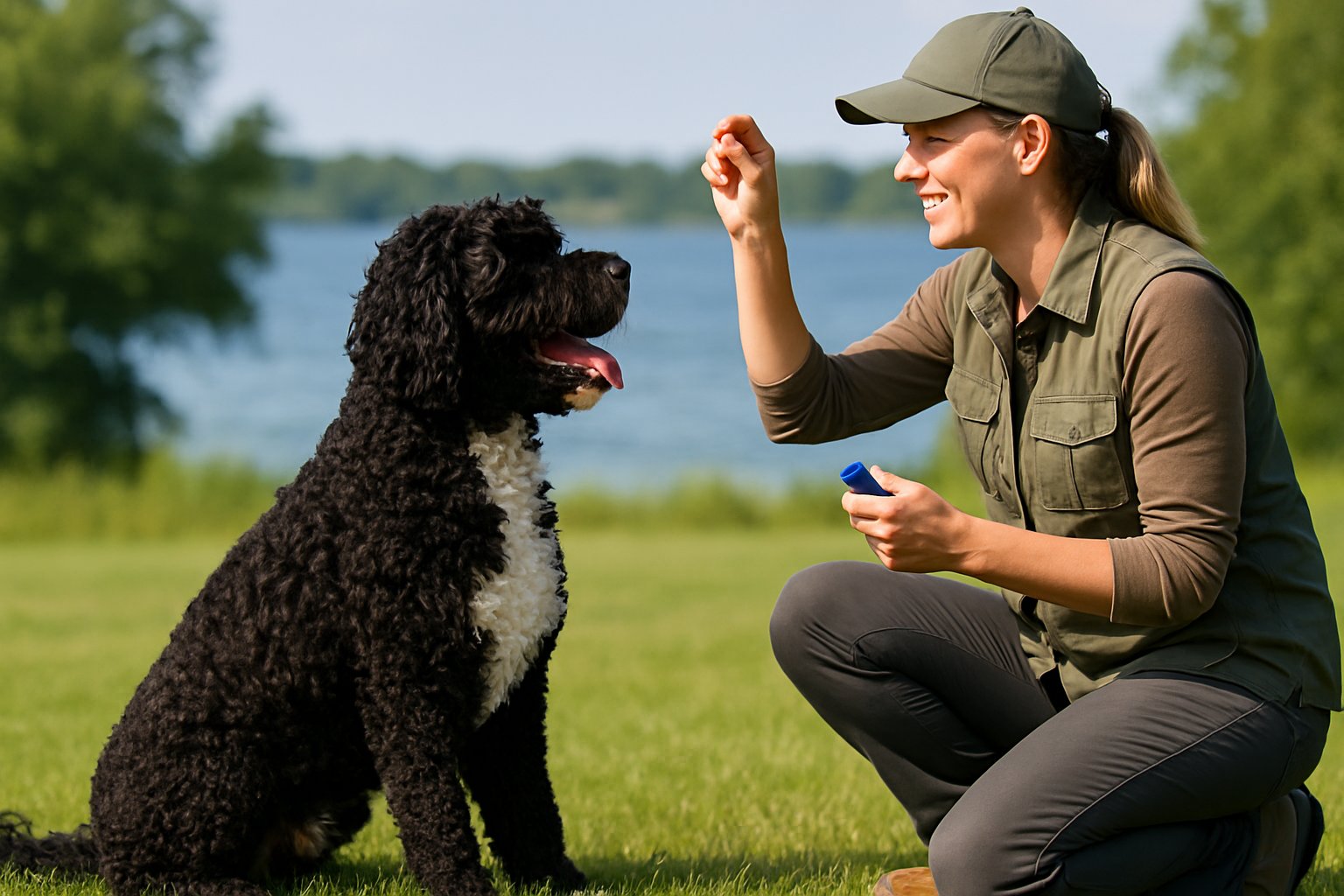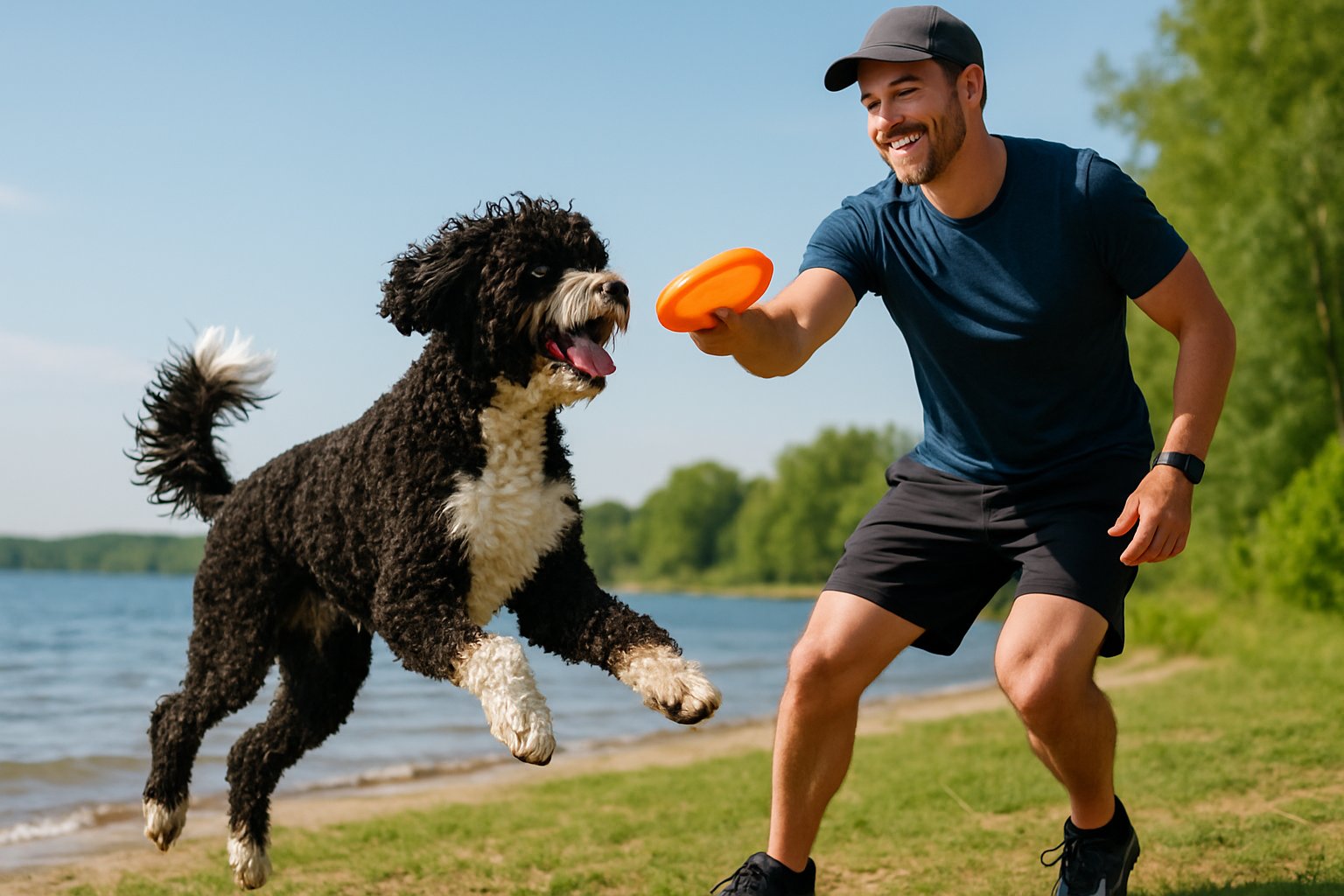Training a Portuguese Water Dog takes patience and consistency, especially because they are energetic and smart companions. These dogs love water and active play, which can make training both fun and challenging.
Learning how to guide your Portuguese Water Dog with the right approach can build a stronger bond and help you enjoy life together. With the right techniques, you can help your dog thrive at home and in the water.
1. Start training early to leverage their high intelligence and energy levels

Begin working with your Portuguese Water Dog as soon as you bring them home. These dogs are known for being smart and full of energy, which means they learn quickly but can also get bored just as fast. Early training helps your dog understand basic commands and routines while their mind is highly curious. Short and positive sessions keep their attention and prevent stubborn behavior.
2. Use positive reinforcement techniques consistently

Portuguese Water Dogs respond best to positive reinforcement. This means you give rewards like treats, praise, or playtime when your dog follows commands or shows good behavior. Using harsh methods or punishments can cause fear and confusion. Instead, focus on what your dog does right and let them know you are pleased. This builds trust between you and your dog.
3. Incorporate plenty of mental stimulation through puzzle toys and training games

Portuguese Water Dogs are very smart and active. They need more than just physical exercise. Adding mental challenges to their routine will help keep them from getting bored or anxious. Puzzle toys are a great way to give your dog something to think about. These toys can make your dog work for treats or figure out how to move pieces to solve a problem. This keeps your dog’s mind busy and encourages problem-solving. You can find many ideas for the best dog puzzle toys for mental stimulation.
4. Establish a regular exercise routine to prevent boredom and destructive behavior

Portuguese Water Dogs are known for their high energy and love for activity. Without enough movement, they can become restless and start acting out. Regular exercise helps use up their extra energy and keeps them calm in the home. Plan daily walks, swim time, or games that encourage running and play. These activities offer both physical exercise and mental stimulation. Tiring out your dog in healthy ways lowers the chance of chewing, digging, or other unwanted actions.
5. Focus on socialization with other dogs and people from a young age
Start socializing your Portuguese Water Dog early. This breed is intelligent and active, but can become shy or too rowdy around new people or pets if not introduced to different situations as a puppy. Socialization with other dogs is just as important. Arrange safe, supervised play sessions with healthy, friendly dogs. Group puppy classes are a great way to help your dog learn to interact politely with others. This teaches your Portuguese Water Dog good manners and builds confidence.
Socialized dogs tend to be happier and less fearful as adults. According to experts, puppy socialization is critical for healthy behavior and long-term development. Prioritize calm, positive experiences to set your dog up for success.
6. Teach basic commands like sit, stay, and recall to ensure control
Teaching your Portuguese Water Dog basic commands is important for daily control and safety. Start with commands like sit, stay, and recall. These give you the ability to manage their behavior in busy areas and near water. Use short, clear words and reward your dog with treats or praise. Positive reinforcement helps your dog learn faster and build trust. Keeping training sessions short and ending on a good note will keep your dog interested.
7. Address mouthing and jumping behaviors promptly with redirection
Portuguese Water Dogs are energetic and playful, which means mouthing and jumping can happen often. These actions are usually not aggressive but are a way for your dog to show excitement or get attention. Still, it’s important to address these behaviors early so they do not become habits. When your dog jumps or mouths, avoid punishing them or giving attention that could encourage the behavior. Instead, calmly turn away or freeze your movements. Only interact with your dog when all four paws are on the floor or when they are calm. This teaches your dog that quiet, polite behavior gets them what they want.
8. Use short, engaging training sessions to maintain their attention
Portuguese Water Dogs are smart and energetic. Long training sessions can cause them to lose focus or become bored. To get the best results, keep your training sessions brief—about 5 to 10 minutes each. Use positive reinforcement during these sessions. Offer treats, praise, or a favorite toy when your dog responds well to a command. Consistent encouragement helps build good behavior.
9. Introduce water-based activities to tap into their natural instincts
Portuguese Water Dogs are well-known for their love of water. This breed was originally used by fishermen, and their instincts make them excel in swimming, diving, and water games. You can use these traits to your advantage during training. Start by teaching your dog basic commands near calm water, gradually moving to activities like fetch and retrieval in the water.
10. Provide clear boundaries and consistent rules to manage stubbornness
Portuguese Water Dogs are smart and full of energy, but they can be stubborn if you are not clear with your rules. Setting boundaries helps your dog understand what is expected. You need to guide your dog with clear and simple instructions. Consistency is very important when training this breed. If you sometimes allow behavior and sometimes do not, your dog will get confused. Use the same commands and routines every day.



